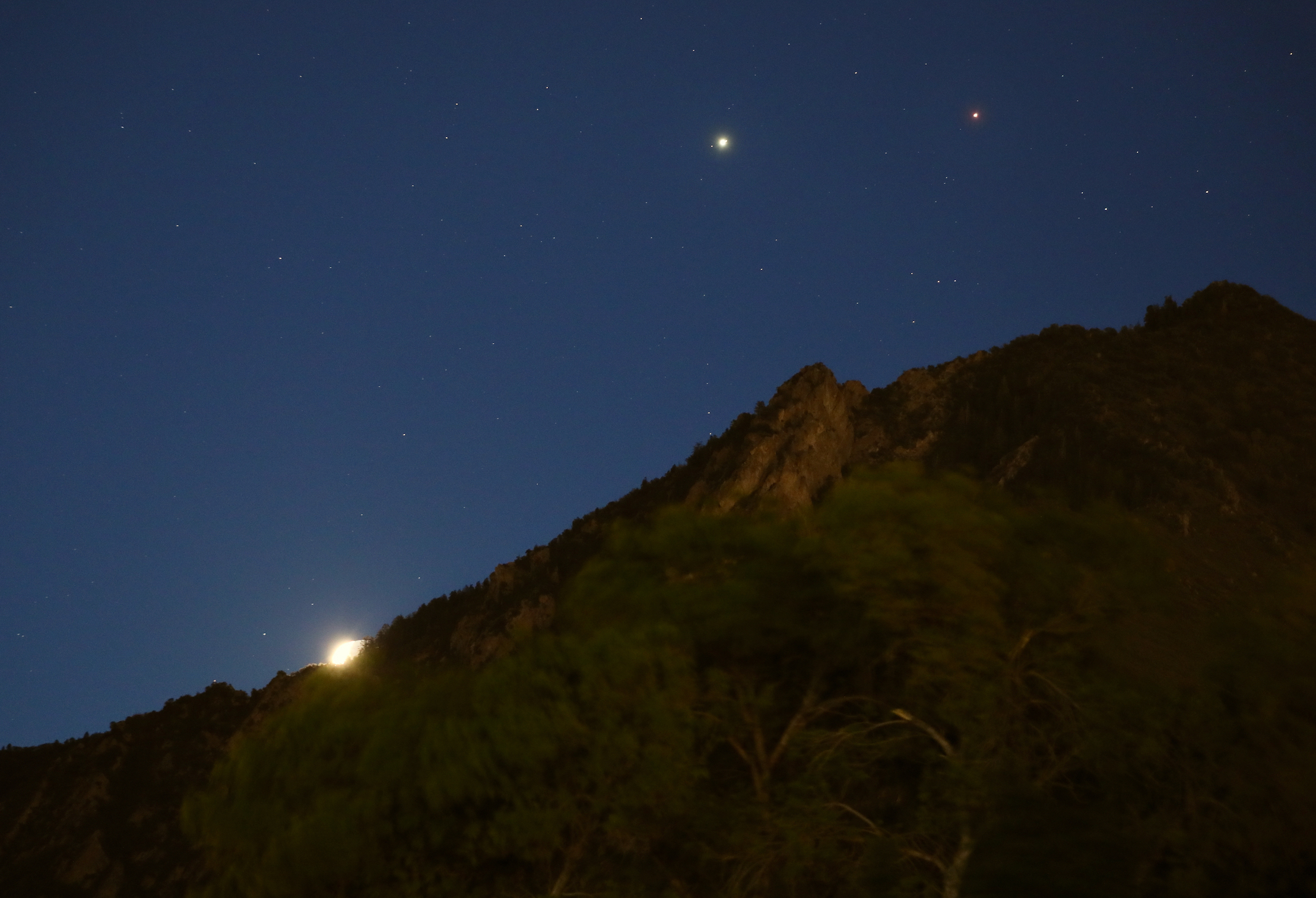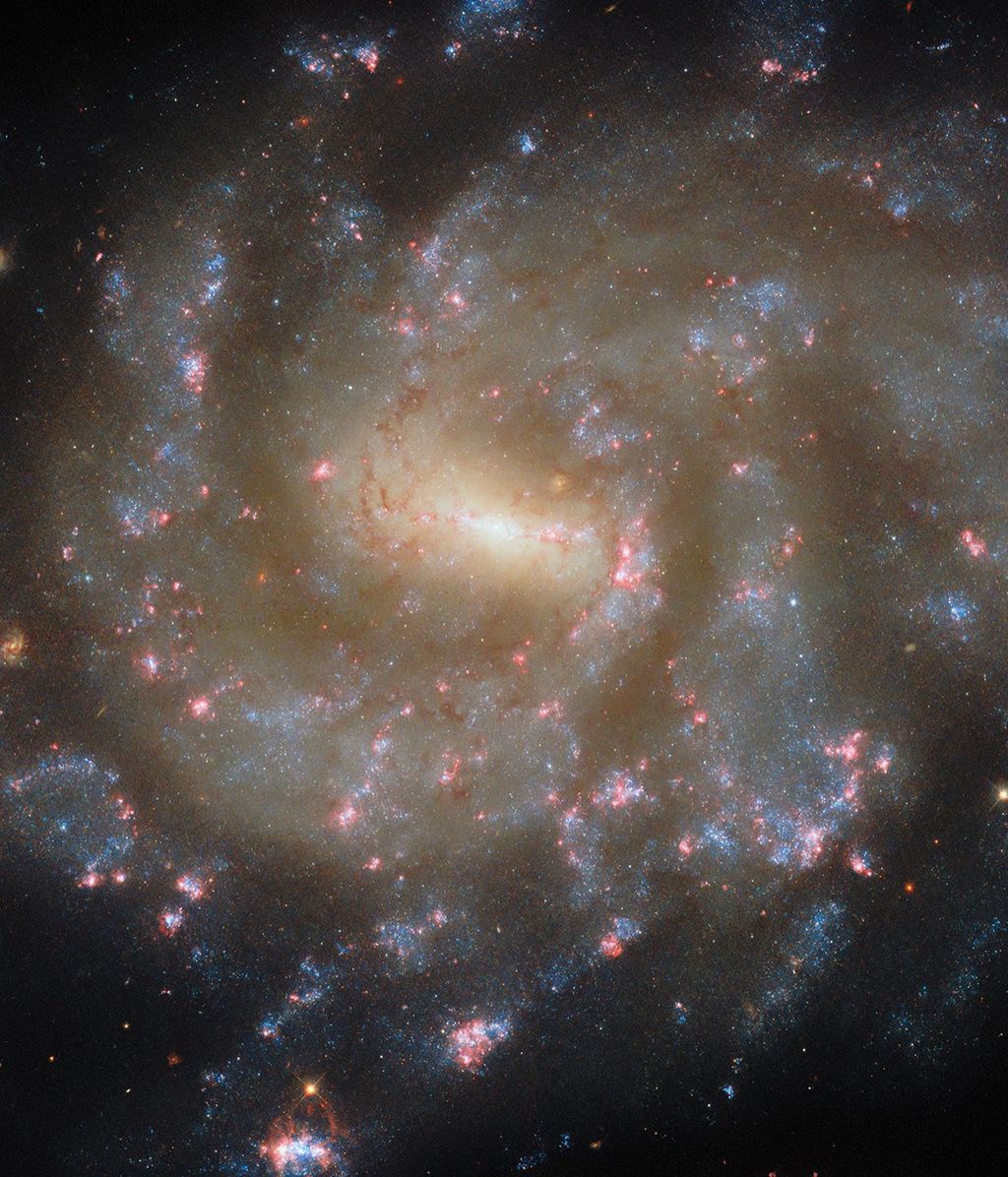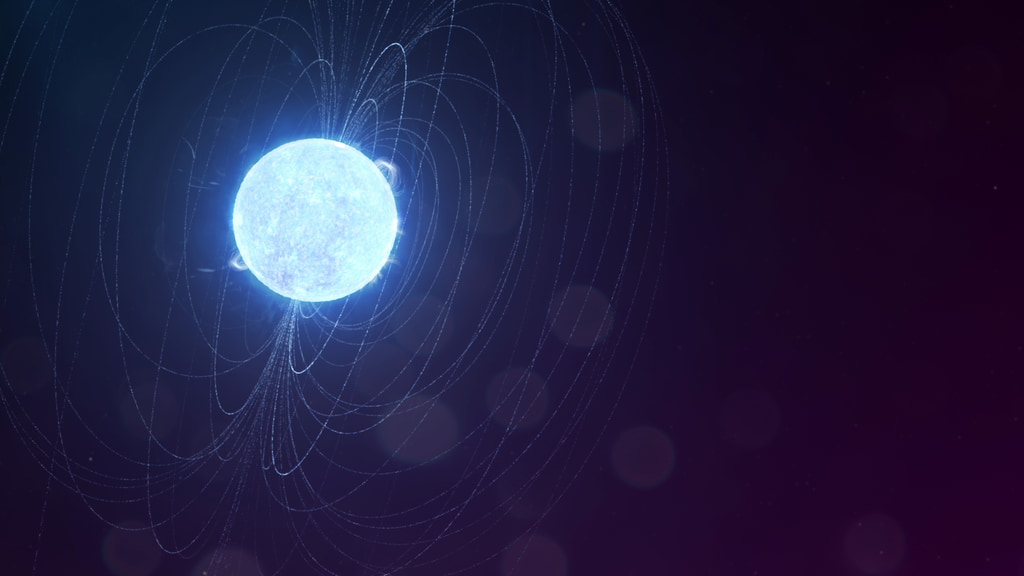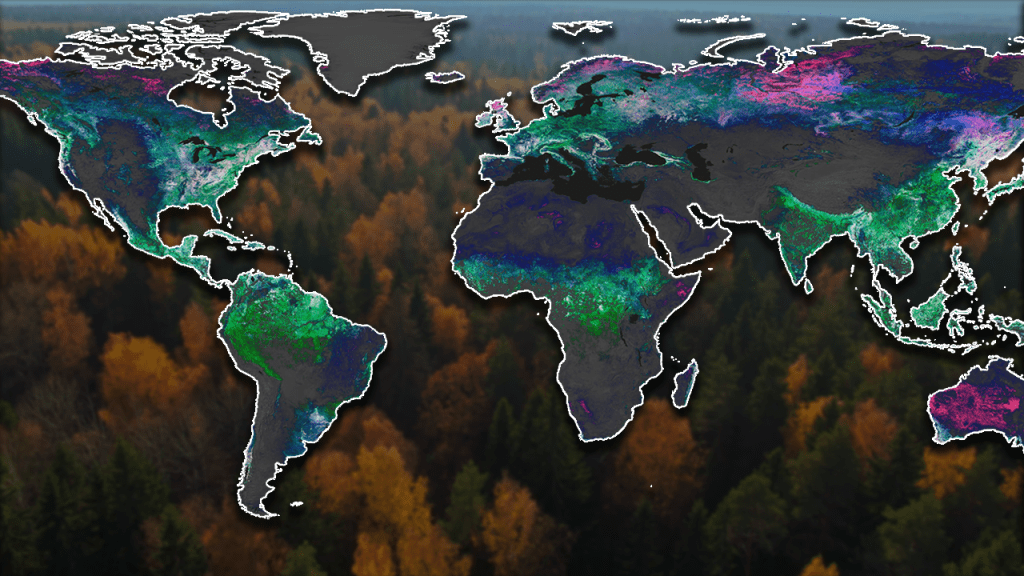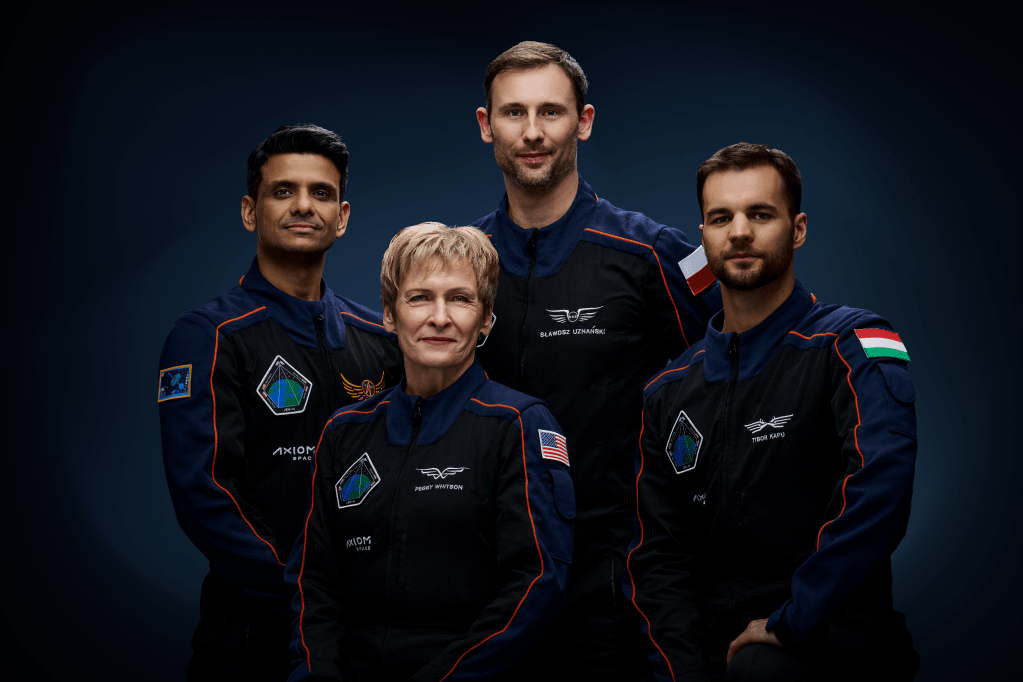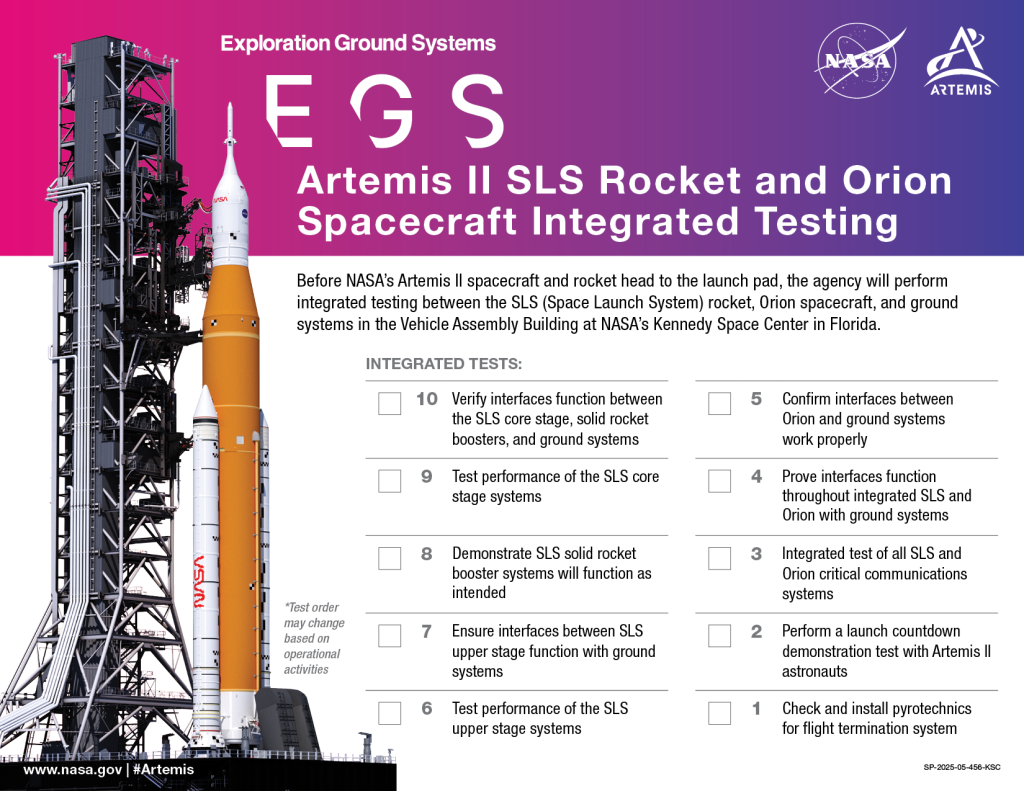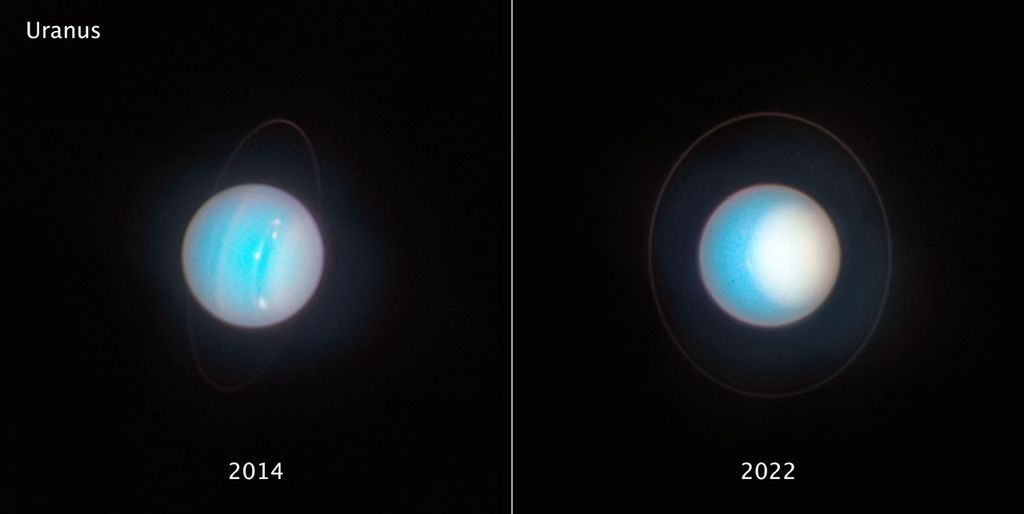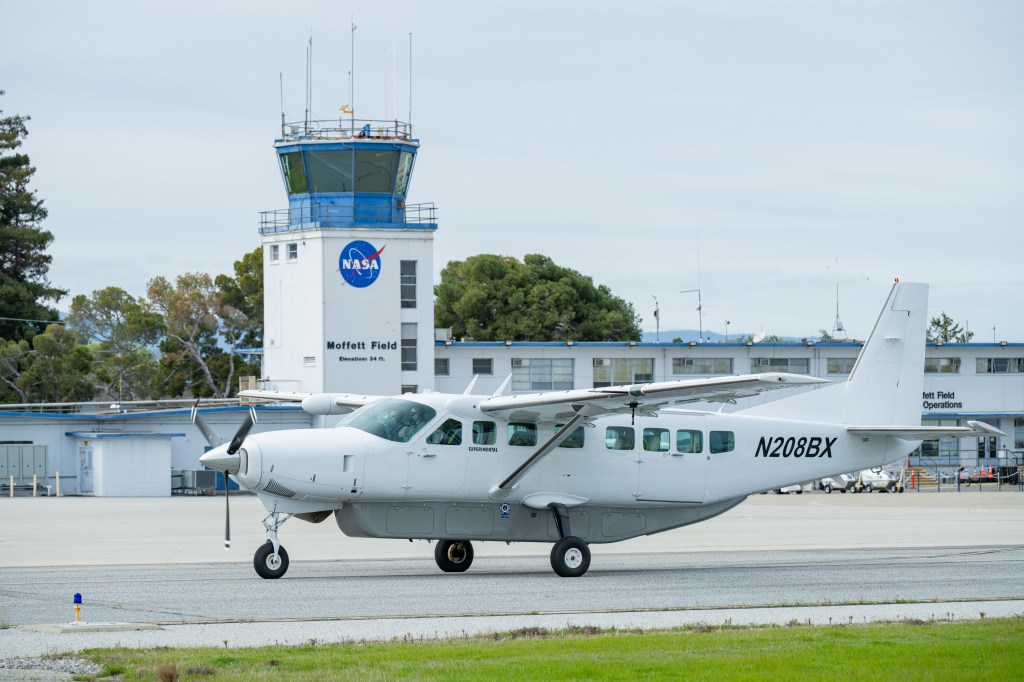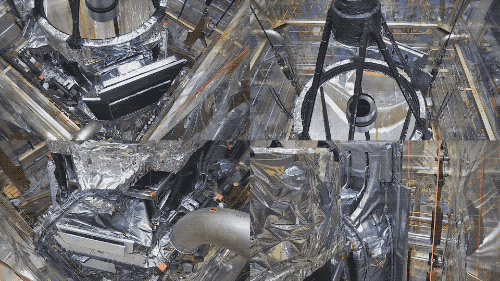1 min read
Hubble’s Ultraviolet Views of Nearby Galaxies Yield Clues to Early Universe
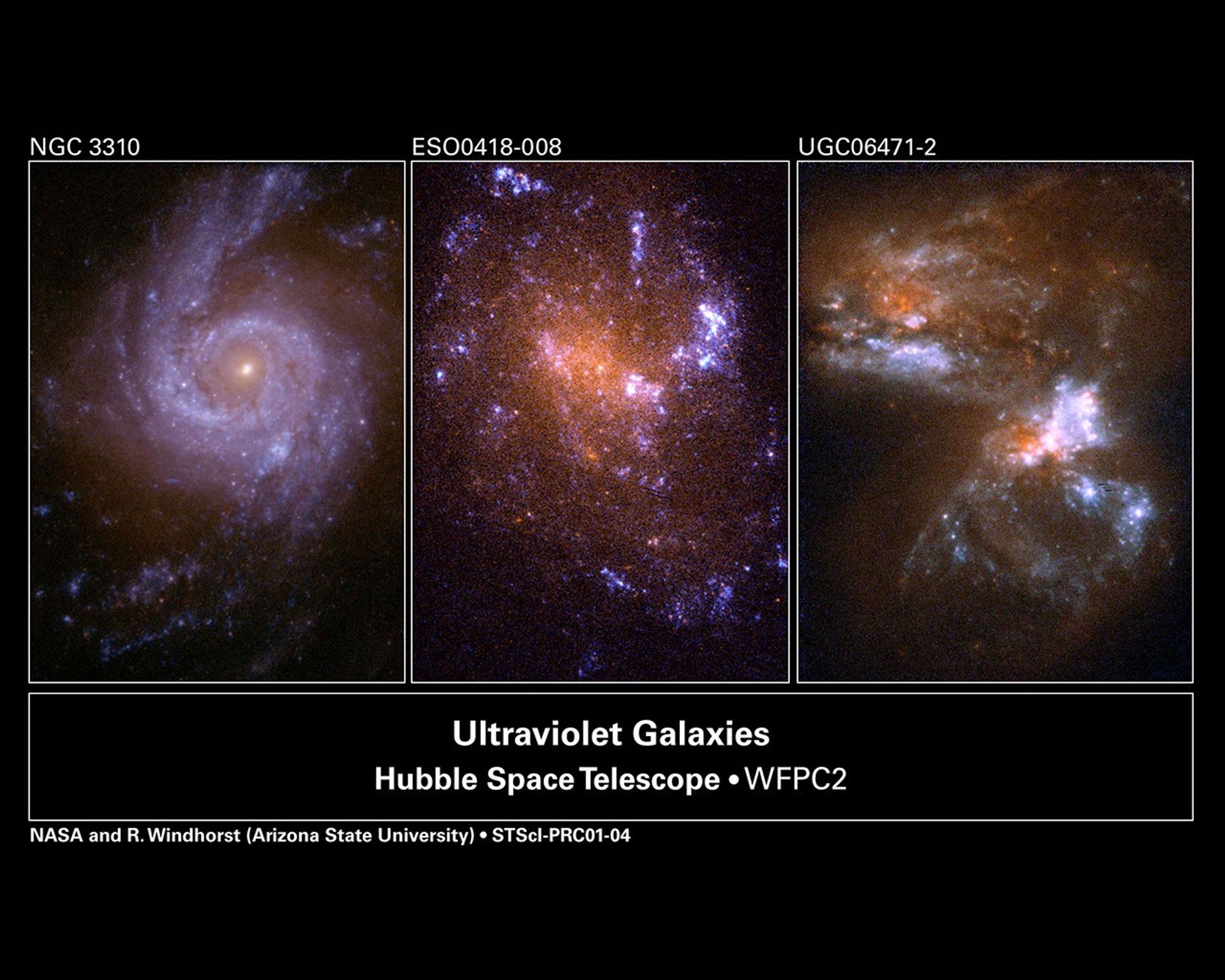
Astronomers are using these three NASA Hubble Space Telescope images to help tackle the question of why distant galaxies have such odd shapes, appearing markedly different from the typical elliptical and spiral galaxies seen in the nearby universe.
Do faraway galaxies look weird because they are truly weird? Or, are they actually normal galaxies that look like oddballs, because astronomers are getting an incomplete picture of them, seeing only the brightest pieces? Light from these galaxies travels great distances (billions of light-years) to reach Earth. During its journey, the light is "stretched" due to the expansion of space. As a result, the light is no longer visible, but has been shifted to the infrared where present instruments are less sensitive. About the only light astronomers can see comes from regions where hot, young stars reside. These stars emit mostly ultraviolet light. But this light is stretched, appearing as visible light by the time it reaches Earth. Studying these distant galaxies is like trying to put together a puzzle with some of the pieces missing.
What, then, do distant galaxies really look like? Astronomers studied 37 nearby galaxies to find out. By viewing these galaxies in ultraviolet light, astronomers can compare their shapes with those of their distant relatives. These three Hubble telescope pictures, taken with the Wide Field and Planetary Camera 2, represent a sampling from that survey. Astronomers observed the galaxies in ultraviolet and visible light to study all the stars that make up these "cities of stars." The results of their survey support the idea that astronomers are detecting the "tip of the iceberg" of very distant galaxies. Based on these Hubble ultraviolet images, not all the faraway galaxies necessarily possess intrinsically odd shapes. The results are being presented today at the 197th meeting of the American Astronomical Society in San Diego, CA.
The central region of the "star-burst" spiral galaxy at far left, NGC 3310, shows young and old stars evenly distributed. If this were the case with most galaxies, astronomers would be able to recognize faraway galaxies fairly easily. In most galaxies, however, the stars are segregated by age, making classifying the distant ones more difficult. NGC 3310 is 46 million light-years from Earth in the constellation Ursa Major. The image was taken Sept. 12-13, 2000.
The middle image is an example of a tiny, youthful spiral galaxy. ESO 418-008 is representative of the myriad of dwarf galaxies astronomers have seen in deep surveys. These galaxies are much smaller than typical ones like our Milky Way. In this galaxy, the population of stars is more strongly segregated by age. The older stars [red] reside in the center; the younger [blue], in the developing spiral arms. These small, young galaxies may be the building blocks of galaxy formation. ESO 418-008 is 56 million light-years from Earth in the southern constellation Fornax. The image was taken Oct. 10, 2000.
The picture at right shows a cosmic collision between two galaxies, UGC 06471 and UGC 06472. These collisions occurred frequently in the early universe, producing galaxies of unusual shapes. The Hubble telescope has spied many such galaxies in the deep field surveys. The ultraviolet images of this galaxy merger suggest the presence of large amounts of dust, which were produced by massive stars that formed before or during this dramatic collision. This dust reddens the starlight in many places, just like a dusty atmosphere reddens the sunset. Studying the effects of this nearby collision could help astronomers explain the peculiar shapes seen in some of the distant galaxies. UGC 06471 and UGC 06472 are 145 million light-years from Earth in the constellation Ursa Major. The image was taken July 11, 2000.
About the Data
- Data DescriptionData DescriptionProposal: A description of the observations, their scientific justification, and the links to the data available in the science archive.
Science Team: The astronomers who planned the observations and analyzed the data. "PI" refers to the Principal Investigator.NGC 3310 image (left) Principal Astronomers: C. Chiarenza, R. Windhorst (ASU), R. de Jong (Univ. of Arizona), and R. O'Connell (Univ. of Virginia) and The Hubble "Mid-UV" Team: R. Windhorst (PI), C. Chiarenza, S. Odewahn, and V. Taylor (ASU); R. de Grijs (Univ. of Cambridge); R. de Jong (Univ. of Arizona); P. Eskridge, J.Frogel (Ohio State Univ.); J. Gallagher, and C. Conselice, (Univ. of Wisconsin, Madison); J. Hibbard, L.D. Matthews (NRAO); J. MacKenty (STScI); and R. O'Connell (Univ. of Virginia). ESO 418-008 image (center) Principal Astronomers: V. Taylor, R. Windhorst (ASU), L.D. Matthews (NRAO), J. Gallagher (Univ. of Wisconsin, Madison), and The Hubble "Mid-UV" Team: R. Windhorst (PI), C. Chiarenza, S. Odewahn, and V. Taylor (ASU); R. de Grijs (Univ. of Cambridge); R. de Jong (Univ. of Arizona); P. Eskridge, J.Frogel (Ohio State Univ.); J. Gallagher, and C. Conselice, (Univ. of Wisconsin, Madison); J. Hibbard, L.D. Matthews (NRAO); J. MacKenty (STScI); and R. O'Connell (Univ. of Virginia). UGC 06471/2 image (right) Principal Astronomers: V. Taylor, R. Windhorst (ASU), J. Hibbard (NRAO), and The Hubble "Mid-UV" Team: R. Windhorst (PI), C. Chiarenza, S. Odewahn, and V. Taylor (ASU); R. de Grijs (Univ. of Cambridge); R. de Jong (Univ. of Arizona); P. Eskridge, J.Frogel (Ohio State Univ.); J. Gallagher, and C. Conselice, (Univ. of Wisconsin, Madison); J. Hibbard, L.D. Matthews (NRAO); J. MacKenty (STScI); and R. O'Connell (Univ. of Virginia). - InstrumentInstrumentThe science instrument used to produce the data.HST>WFPC2
- Exposure DatesExposure DatesThe date(s) that the telescope made its observations and the total exposure time.September 12 - 13, 2000 (left), October 10, 2000 (center), July 11, 2000 (right)
- Object NameObject NameA name or catalog number that astronomers use to identify an astronomical object.NGC 3310, ESO 418-008, UGC 06471, UGC 06472
- Object DescriptionObject DescriptionThe type of astronomical object.Galaxies
- Release DateJanuary 11, 2001
- Science ReleaseHubble’s Ultraviolet Views of Nearby Galaxies Yield Clues to Early Universe
- CreditNASA, Rogier Windhorst (Arizona State University, Tempe, AZ), and the Hubble mid-UV team
Share
Details
Claire Andreoli
NASA’s Goddard Space Flight Center
Greenbelt, Maryland
claire.andreoli@nasa.gov



